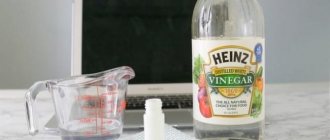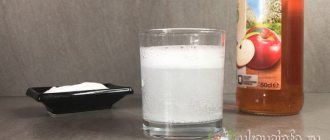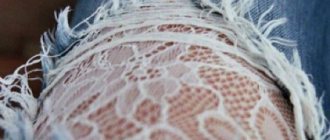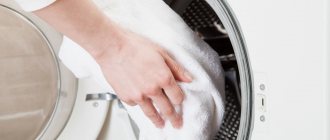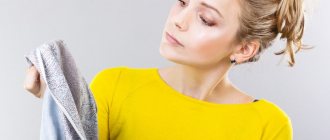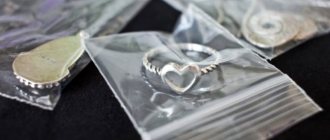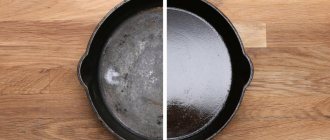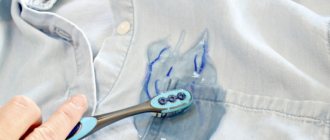How to dilute vinegar table?
One of the main questions related to the preparation of pickles is how to dilute
acetic acid 70% to 9%
vinegar
.
... How to quickly dilute acetic acid 70 to 9: table
| Acid 70%, half tablespoon | Water, ml | Solution 9%, ml |
| 2 | 180 | 200 |
| 3 | 270 | 300 |
| 4 | 360 | 400 |
| 5 | 450 | 500 |
Acetic acid is widely used in industry. An aqueous solution of acetic acid in the form of food additive E260 is used as a preservative. Moreover, unlike many other preservatives used, acetic acid in reasonable concentrations is considered safe for health. That is why it is common in home cooking and canning. Housewives often have to dilute acetic acid solutions to the desired concentration. How to do it right?
Concentrated acetic acid (concentration of about 100%) is called glacial and is not used in everyday life. Moreover, acetic acid with a concentration of more than 80% is included in the list of precursors whose circulation in the Russian Federation is limited. Attempts to purchase and use such acid can lead to serious trouble with the law.
Less concentrated solutions are sold completely freely. In stores you can buy vinegar essence (aqueous solution with a concentration of 70-80%), acetic acid solution (25-30%), table vinegar with a concentration of 3-9%. Such diversity often leads to the fact that recipes indicate a certain amount of acetic acid of one type, but a completely different one is available. But it doesn’t matter, everything can be easily calculated and replaced.
A less concentrated vinegar from a more concentrated one (for example, 9% vinegar from a 70% essence) can be obtained by diluting it with water. Water must be cool and clean, preferably filtered or distilled. It is impossible to obtain a more concentrated vinegar from a less concentrated one. However, in some cases (for example, the recipe indicates 70% essence, but only 9% table vinegar is available), you can simply take more of the weak solution. All calculations can be carried out using an interactive calculator for dilution schemes for aqueous solutions. It's very easy to use.
In most cases, breeding is carried out according to standard schemes, which are given below. The article uses “culinary” breeding schemes, expressed in parts. You can measure parts by teaspoons or tablespoons. It is also convenient to use a large 10 or 20 gram medical syringe.
How to get table vinegar 3%
3% vinegar is most often used for salad dressing. To obtain it you need to dilute:
- 1 part 80% vinegar essence to 25.7 parts water
- 1 part 70% vinegar essence to 22.3 parts water
- 1 part 30% acetic acid solution to 9 parts water
- 1 part 9% table vinegar to 2 parts water
How to get table vinegar 5%
5% vinegar is used for dressing salads and preparing sauces. To obtain it you need to dilute:
- 1 part 80% essence to 15 parts water
- 1 part 70% essence to 13 parts water
- 1 part 30% acetic acid solution to 5 parts water
- 1 part 9% table vinegar to 0.8 parts water
How to get table vinegar 6%
6% vinegar is most often used for marinating meat. To obtain it you need to dilute:
- 1 part 80% essence to 12.3 parts water
- 1 part 70% essence to 10.7 parts water
- 1 part 30% acetic acid solution to 4 parts water
- 1 part 9% table vinegar to 0.5 parts water
How to get table vinegar 9%
9% vinegar is used in canning. To obtain it you need to dilute:
- 1 part 80% essence to 7.9 parts water
- 1 part 70% essence and 6.8 parts water
- 1 part 30% acetic acid solution to 2.3 parts water
Vinegar 9% can be replaced with a less concentrated one:
- 1 part 9% vinegar can be replaced with 1.5 parts 6% vinegar
- 1 part 9% vinegar can be replaced with 3 parts 3% vinegar
How to get vinegar 10%
10% vinegar is used in canning. To obtain it you need to dilute:
- 1 part 80% essence to 7 parts water
- 1 part 70% essence and 6 parts water
- 1 part 30% acetic acid solution to 2 parts water
Vinegar 10% can be replaced with a less concentrated one:
- 1 part 10% vinegar can be replaced with 1.1 parts 9% vinegar
- 1 part 10% vinegar can be replaced with 1.7 parts 6% vinegar
- 1 part 10% vinegar can be replaced with 3.3 parts 3% vinegar.
How to get vinegar 25%
25% vinegar is used for household purposes. To obtain it you need to dilute:
- 1 part 80% essence to 2.2 parts water
- 1 part 70% essence to 1.8 parts water
How to get vinegar 30%
30% vinegar is used for household purposes. To obtain it you need to dilute:
- 1 part 80% essence to 1.7 parts water
- 1 part 70% essence and 1.3 parts water
How to replace vinegar essence 70%
70% vinegar is used for canning. Vinegar essence 70% can be replaced with less concentrated vinegar:
- 1 part of 70% vinegar essence can be replaced with 2.3 parts of a 30% acetic acid solution
- 1 part of 70% vinegar essence can be replaced with 2.8 parts of a 25% acetic acid solution
- 1 part 70% vinegar essence can be replaced with 7 parts 10% acetic acid solution
- 1 part 70% vinegar essence can be replaced with 7.8 parts 9% table vinegar
- 1 part 70% vinegar essence can be replaced with 11.7 parts 6% table vinegar
- 1 part 70% vinegar essence can be replaced with 14 parts 5% table vinegar
- 1 part of 70% vinegar essence can be replaced with 23.3 parts of 3% table vinegar
If the recipe uses water, its amount must be reduced by the amount of diluted vinegar added.
Be careful when working with concentrated solutions of acetic acid (more than 15%). Even acid vapors can cause burns to the skin and mucous membranes. Use personal protective equipment and work in a ventilated area. If acid gets on your skin, it should be washed off immediately with water. If acid gets into your eyes, rinse with plenty of water and consult a doctor.
We recommend reading
- Pie with apples? Of course, Charlotte!
- Quick cherry compote
- Buddhist cherry compote
- Chicken in soy sauce with peanuts and ginger
- How to salt pike caviar?
- Yeast dough pizza
- What is asparagus in Korean?
- How to make strawberry jam?
- How to sterilize jars for homemade preparations?
- How to make grape juice?
Where is the 3% solution used?
3% vinegar has found use in cooking. The slightly acidic spicy solution is an excellent independent seasoning for boiled dumplings and vegetable salads. Adding it to the first courses will preserve the bright color of the borscht and add a piquant sourness to the pickle. And not a single holiday table would be complete without homemade marinades - cucumbers, garlic, onions.
3% vinegar has also found a place in cosmetology. With its help you can fight acne and dandruff; it will soothe itching after insect bites and help remove bruises.
3% vinegar can be made from 70% essence, or you can dilute 9% table vinegar to 3%.
IMPORTANT! Vinegar essence is produced only of synthetic origin, so its solutions are best used for non-food needs.
Main characteristics of vinegar essence
Acetic essence is a 70–80% aqueous solution of the acid of the same name, which is obtained by fermenting alcohols and carbohydrates, souring wines from different grape varieties, and is also synthesized from metals and inorganic materials.
It is a water-soluble liquid without a distinct color with a sharp pungent odor and a sour taste.
Acetic acid consists of esters and salts called acetates. Vinegar also contains lactic, malic, and ascorbic acids. Concentrated formulations are sold in the form of 70% essence, which is diluted at home to the desired percentage. The most commonly found on shelves is 9% table vinegar.
Precautionary measures
Simple safety rules should be followed when storing and diluting 70% vinegar essence:
- Store the essence only in industrial packaging with a label! Essence manufacturers specifically use non-standard bottles so that the product cannot be confused with anything else;
- keep the essence out of the reach of children;
- when diluting essence, be sure to pour the essence into water, and not vice versa;
- Do not lean over the solution, so as not to burn your respiratory tract with acetic acid vapor when mixing.
Precautionary measures
Simple safety rules should be followed when storing and diluting 70% vinegar essence:
- Store the essence only in industrial packaging with a label! Essence manufacturers specifically use non-standard bottles so that the product cannot be confused with anything else;
- keep the essence out of the reach of children;
- when diluting essence, be sure to pour the essence into water, and not vice versa;
- Do not lean over the solution, so as not to burn your respiratory tract with acetic acid vapor when mixing.
Contraindications
Even such a harmless method is best used only after consultation with a pediatrician. For example, you need to clarify how to reduce a child’s temperature with vinegar from an emergency service worker. The dispatcher is available around the clock, so it’s better to call so as not to harm the baby.
Rubbing with vinegar is not recommended if the child is under 3 years old. The fumes can be toxic to the baby's body. Below we will look at what alternative solutions can be prepared. As a last resort, it is permissible to wear cotton socks soaked in a vinegar solution.
Vinegar with water will not help a child’s temperature even if he has cold hands and feet. This indicates vasospasm, and rubbing will only make it worse. In this case, it is better to have a No-Shpy tablet in your first aid kit.
Cleaning carpets with vinegar
There is no need to send your carpets to dry cleaning. Table vinegar will help you get by on your own, at the same time getting rid of the unpleasant odors ingrained in the pile. To do this, pour a couple of glasses of heated water, a tablespoon of vinegar and a teaspoon of baking soda into a spray bottle. Immediately spray the resulting solution onto the carpet.
This method is only suitable for synthetic coatings. Natural wool carpets cannot be treated or cleaned with vinegar.
Table vinegar is also useful in removing fresh stains. If something is spilled on the carpet, immediately blot the stain with a napkin, being careful not to rub it. Then the contaminated area is sprayed with an vinegar-water solution (1:1) from a spray bottle. Soaking continues for several minutes. Then blotting with a napkin must be repeated.
Photo: https://zoostrana.ru/storage/uploads/19af5941dcc8adae714268da693427cf.jpg
Sprinkling baking soda on the stain before spraying the water-vinegar mixture gives excellent results. In this way, a certain part of the dirt is absorbed. However, it is worth first testing on an inconspicuous area, because the acid can deprive the color of the carpet, then the treated area will stand out in color.
The most popular vinegar solutions
It is better to use different types of vinegar for different purposes. There is natural vinegar, obtained by fermenting fruit and berry juices, and there is synthetic vinegar, obtained by distilling wood, oil, and gas.
The cost of natural vinegar is much higher, and so is its taste, so for cooking it is better to use natural varieties, but synthetic varieties are quite suitable for cleaning kitchen surfaces and removing stains.
| Item no. | Area of application of the solution | Permissible concentration |
| 1. | Cleaning the kitchen stove from grease, removing rust | 30% |
| 2. | Disinfection and stain removal from fabric surfaces | 10% |
| 3. | Marinades for long-term storage in hermetically sealed jars | 9% |
| 4. | Quick marinating of meat and onions | 8% |
| 5. | Quick vegetable marinades that do not require hermetically sealed without long-term storage | 7% |
| 6. | Extinguishing soda for baking flour products | 6% |
| 7. | Removing odors from lunch boxes, bread bins, refrigerators | 5% |
| 8. | Independent seasoning for boiled and fried meat (pork) | 4% |
| 9. | Dressing fresh vegetable salads, preparing homemade mayonnaise | 3% |
Is vinegar effective against coronavirus?
Vinegar for disinfection as a remedy for COVID-19 is not highly effective. The virus dies in an acidic environment, but complete neutralization requires higher concentrations, as well as a long exposure time.
You shouldn’t rely on vinegar to completely disinfect surfaces from coronavirus, but it can reduce the risk of infection. Read what will help against coronavirus here.
Making hand sanitizer against coronavirus and other pathogens:
- pour ½ liter of water and 9% vinegar into a spray bottle;
- add 1 tbsp. l. “Whiteness”, 5 drops each of essential oil of lavender, eucalyptus, orange.
You can irrigate your hands with a disinfectant after returning from the street or contact with people.
Doctors' opinion
Before deciding for yourself whether it is possible to rub your child with vinegar at a temperature, you need to evaluate all the pros and cons. Not all people resort to using pharmaceutical drugs; some strictly use their grandmother’s methods. Others, on the contrary, consider such treatment categorically unacceptable.
As usual, the truth is somewhere in the middle. Doctors themselves have misconceptions about this method. Some say that this is better than taking antipyretic drugs, while others are categorically against this method of treatment. But even a person without special education understands that vinegar can be dangerous for a child. You need to know how to perform this procedure correctly to make it effective.
Important to remember
The higher the temperature, the more carefully you need to approach the procedure. The child is now literally hot, like a heater in a bathhouse. Too cold water will not only be unbearable - it can cause cramps.
Therefore, you need to know how to dilute vinegar when a child has a fever. The liquid must be warm. Doctors recommend 38 degrees, but it can be higher, 40-43 degrees. It will begin to evaporate quickly, due to this it cools the surface of the body well.
Where is the 3% solution used?
3% vinegar has found use in cooking. The slightly acidic spicy solution is an excellent independent seasoning for boiled dumplings and vegetable salads. Adding it to the first courses will preserve the bright color of the borscht and add a piquant sourness to the pickle. And not a single holiday table would be complete without homemade marinades - cucumbers, garlic, onions.
3% vinegar has also found a place in cosmetology. With its help you can fight acne and dandruff; it will soothe itching after insect bites and help remove bruises.
3% vinegar can be made from 70% essence, or you can dilute 9% table vinegar to 3%.
IMPORTANT! Vinegar essence is produced only of synthetic origin, so its solutions are best used for non-food needs.
Note to the hostess
Table for obtaining solutions of various concentrations
| Parts ratio (essence:water) | Solution concentration |
| 1:22,5 | 3% |
| 1:17 | 4% |
| 1:13 | 5% |
| 1:11 | 6% |
| 1:9 | 7% |
| 1:8 | 8% |
| 1:7 | 9% |
| 1:6 | 10% |
| 1:1,5 | 30% |
Vinegar added to water will prolong the life of a festive bouquet of flowers, drive cockroaches out of the house and stop hiccups, give dishes a unique taste and make hair smooth and shiny... This is a real miracle that came from time immemorial, but has not lost its relevance in the modern world!
Why do you need a vinegar calculator? It's simple, most recipes in our kitchen require vinegar of a certain concentration, and usually only vinegar essence is available, which not everyone knows how to dilute. Therefore, in order not to bother yourself with calculations, but to immediately move on to preparing a delicious dish, we have created a vinegar calculator that will tell you how to dilute the vinegar to the desired proportion.
The most popular in recipes is the use of 6% and 9% vinegar solutions. However, there are also unusual options, such as 40%, 5%, 3%. To get instructions for diluting vinegar, just indicate what percentage you want to get and click “calculate”. Well, then all that remains is to dilute the vinegar essence with water in the required proportions.
The most popular vinegar solutions
It is better to use different types of vinegar for different purposes. There is natural vinegar, obtained by fermenting fruit and berry juices, and there is synthetic vinegar, obtained by distilling wood, oil, and gas.
The cost of natural vinegar is much higher, and so is its taste, so for cooking it is better to use natural varieties, but synthetic varieties are quite suitable for cleaning kitchen surfaces and removing stains.
| Item no. | Area of application of the solution | Permissible concentration |
| 1. | Cleaning the kitchen stove from grease, removing rust | 30% |
| 2. | Disinfection and stain removal from fabric surfaces | 10% |
| 3. | Marinades for long-term storage in hermetically sealed jars | 9% |
| 4. | Quick marinating of meat and onions | 8% |
| 5. | Quick vegetable marinades that do not require hermetically sealed without long-term storage | 7% |
| 6. | Extinguishing soda for baking flour products | 6% |
| 7. | Removing odors from lunch boxes, bread bins, refrigerators | 5% |
| 8. | Independent seasoning for boiled and fried meat (pork) | 4% |
| 9. | Dressing fresh vegetable salads, preparing homemade mayonnaise | 3% |

